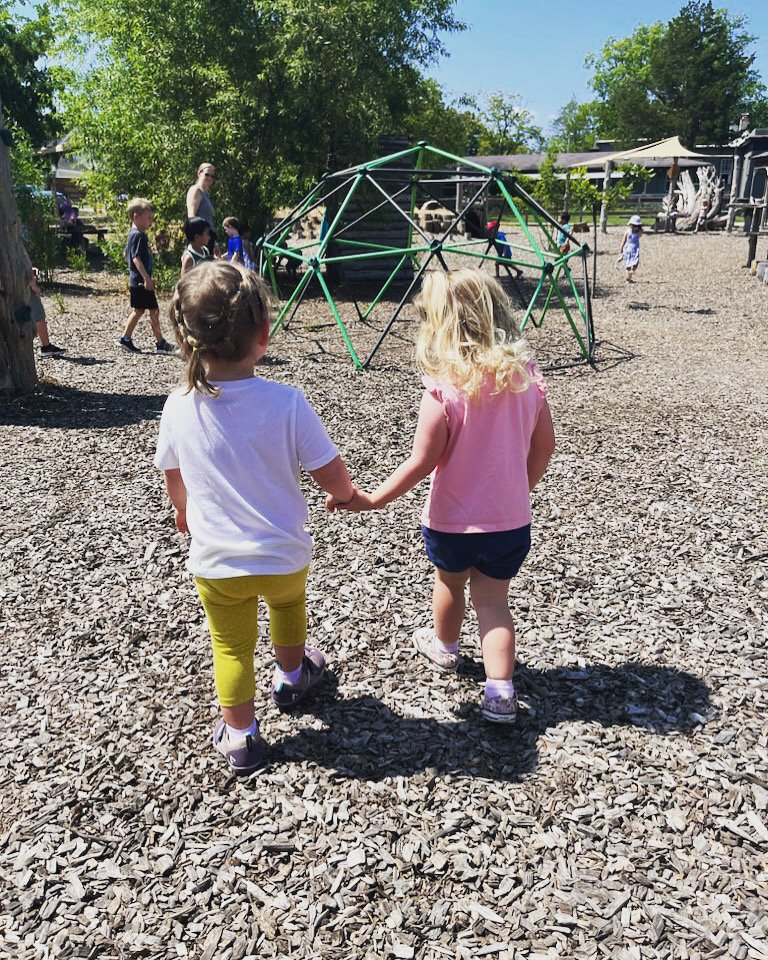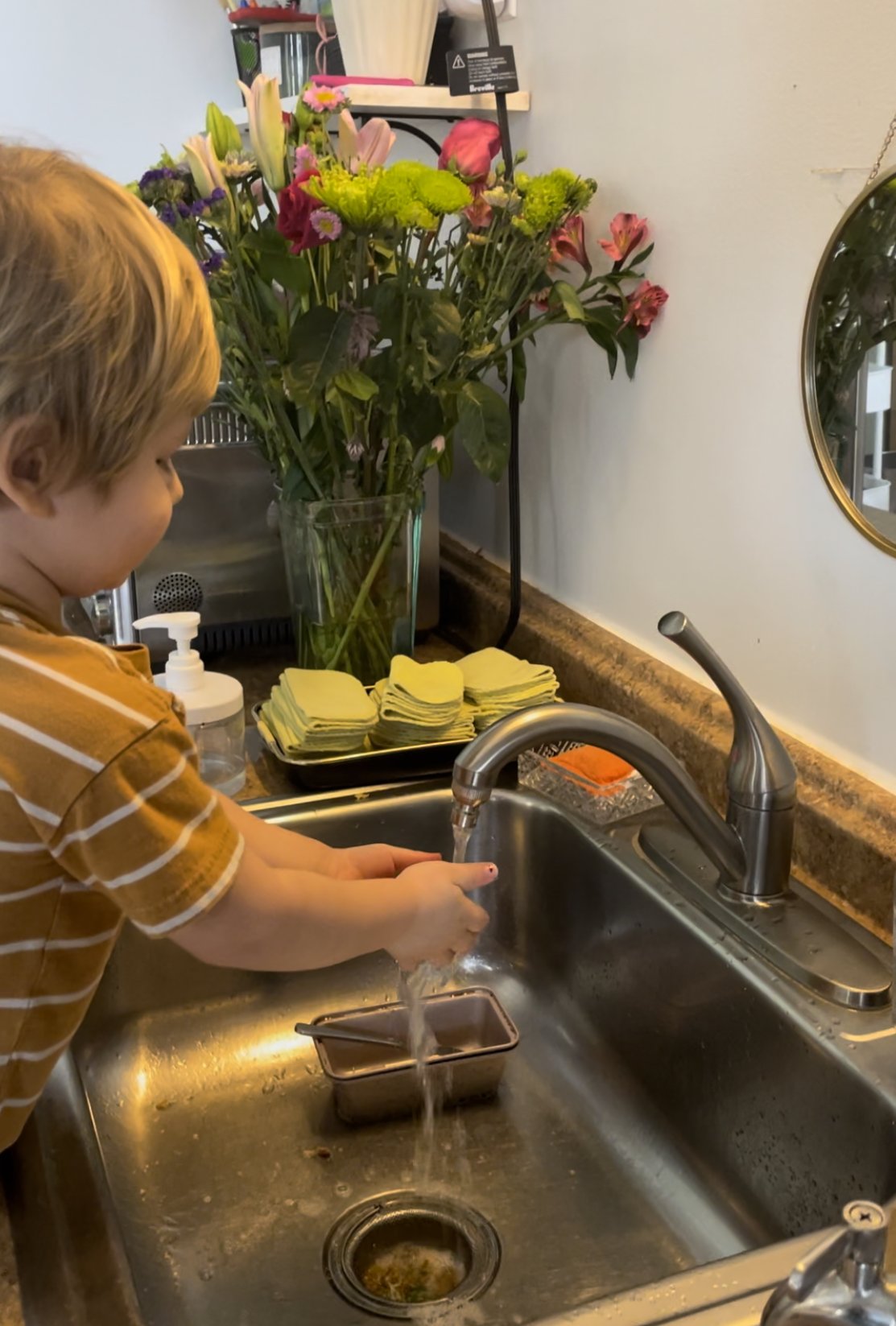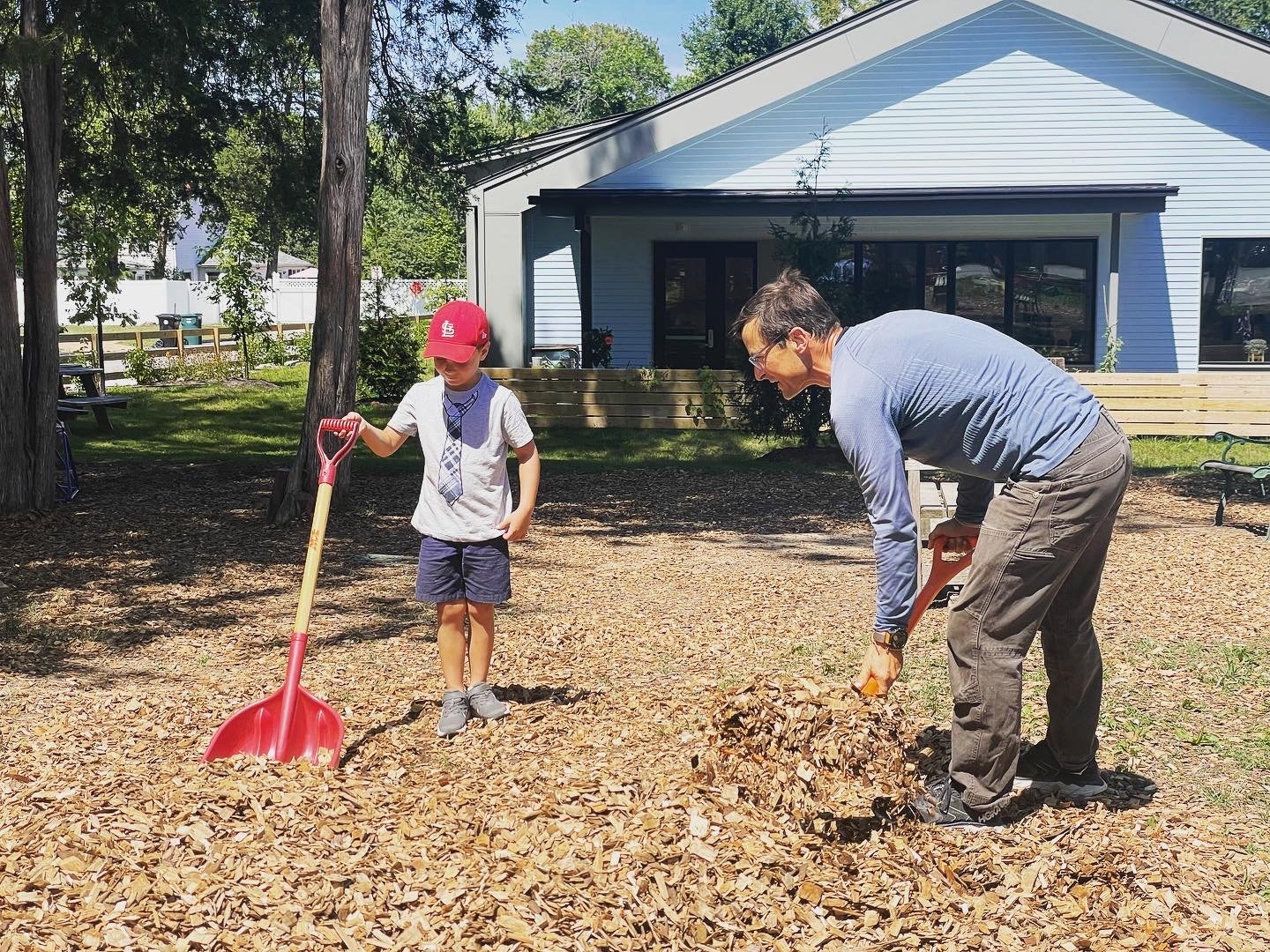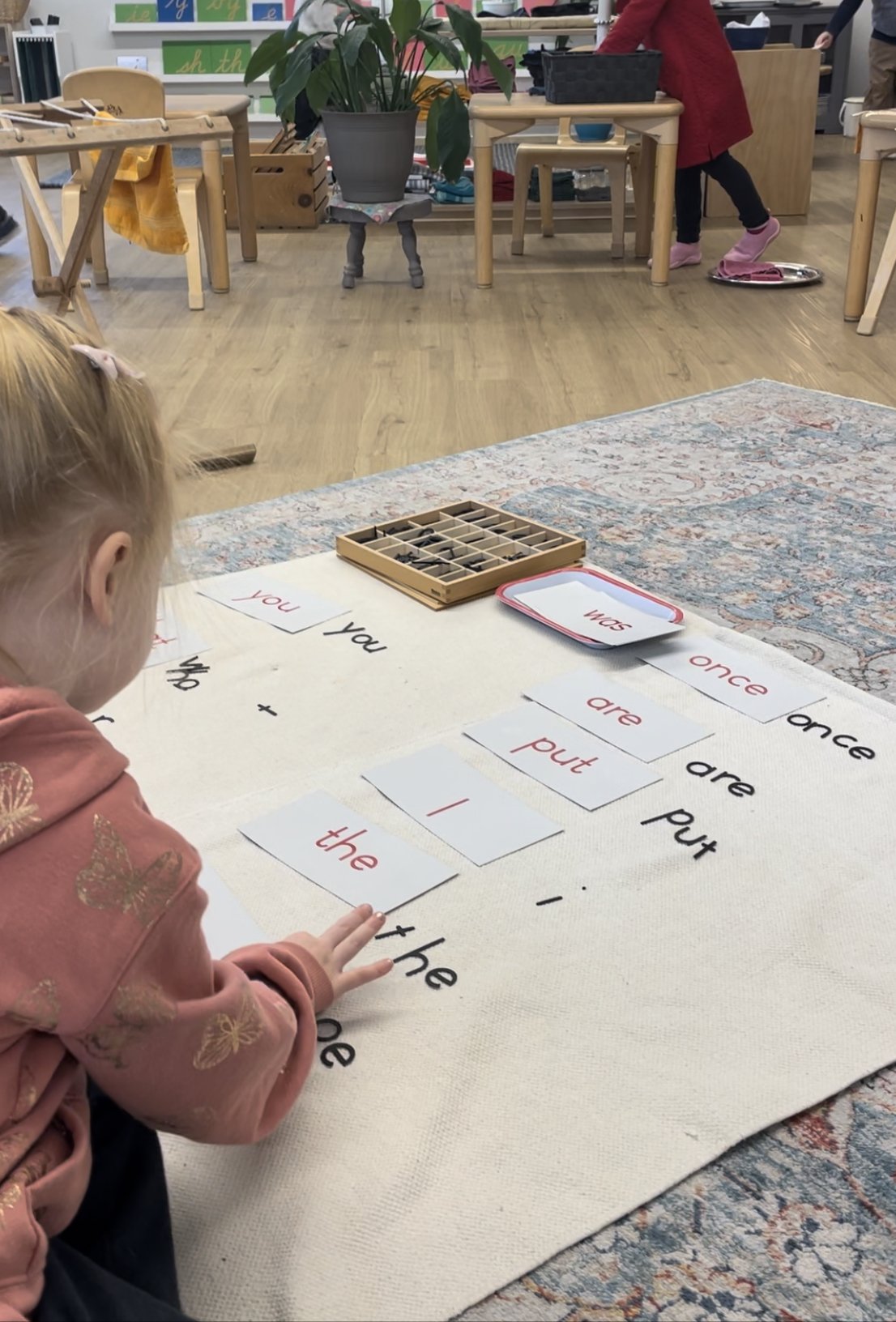Grace and Courtesy in the First Plane of Development
 Ever wonder how a classroom of 28 (or more) children, each engaged in their own activity, remains a calm and orderly environment? How do Montessori guides elicit appropriate behavior in their students? Lessons in Grace and Courtesy (another Montessori Buzzword!) account for much of this reality. Today, we’ll share with you what we mean by “grace and courtesy” in a Montessori classroom.
Ever wonder how a classroom of 28 (or more) children, each engaged in their own activity, remains a calm and orderly environment? How do Montessori guides elicit appropriate behavior in their students? Lessons in Grace and Courtesy (another Montessori Buzzword!) account for much of this reality. Today, we’ll share with you what we mean by “grace and courtesy” in a Montessori classroom. Grace describes the harmony of our own mind and body. Courtesy describes the extension of that grace to others. Through Grace and Courtesy lessons, guides demonstrate and model how to handle certain situations that naturally occur in the classroom environment, which include language and movement.
Grace describes the harmony of our own mind and body. Courtesy describes the extension of that grace to others. Through Grace and Courtesy lessons, guides demonstrate and model how to handle certain situations that naturally occur in the classroom environment, which include language and movement. We will focus on the first plane of development in this blog post, which includes children from birth to six years old. Grace and Courtesy lessons occur in elementary classrooms as well, but take on particular nuances because of the differing developmental needs of the older child. We will look at that age group specifically in a future blog post.
We will focus on the first plane of development in this blog post, which includes children from birth to six years old. Grace and Courtesy lessons occur in elementary classrooms as well, but take on particular nuances because of the differing developmental needs of the older child. We will look at that age group specifically in a future blog post. Guides use Grace and Courtesy lessons to show children how to walk around a work rug, how to blow their nose, how to ask for help, or how to greet adults and each other. The lessons are narrow in focus and aim to introduce a specific skill so as not to confuse the child. For example, the guide would introduce separate lessons for offering assistance versus asking for help. Grace and Courtesy lessons are usually presented to a small group of children and at a neutral time after a particular behavior or language has been observed. The guide might notice an issue in the classroom and make a note to present that particular lesson at a later time.
Guides use Grace and Courtesy lessons to show children how to walk around a work rug, how to blow their nose, how to ask for help, or how to greet adults and each other. The lessons are narrow in focus and aim to introduce a specific skill so as not to confuse the child. For example, the guide would introduce separate lessons for offering assistance versus asking for help. Grace and Courtesy lessons are usually presented to a small group of children and at a neutral time after a particular behavior or language has been observed. The guide might notice an issue in the classroom and make a note to present that particular lesson at a later time. A lesson might look like this:1. The guide starts by inviting the children to the lesson, “I’m going to show you how to walk around a work rug.”2. The guide models for the child how to properly walk around the work rug. When the guide demonstrates the movement, they keep the words separate from the action. Because the child is in a sensitive period for language development, their brain will focus only on the words said and miss the action demonstrated, if the two are not separated. As Dr. Maria Montessori said,
A lesson might look like this:1. The guide starts by inviting the children to the lesson, “I’m going to show you how to walk around a work rug.”2. The guide models for the child how to properly walk around the work rug. When the guide demonstrates the movement, they keep the words separate from the action. Because the child is in a sensitive period for language development, their brain will focus only on the words said and miss the action demonstrated, if the two are not separated. As Dr. Maria Montessori said,
“Do not tell them how to do it. Show them how to do it and do not say a word. If you tell them, they will watch your lips move. If you show them, they will want to do it themselves.”
3. The guide then invites each child to practice the activity. As always, it is optional for the child. The guide does not remind the child to put this lesson into practice in a real-life situation. If pressure is applied to the child to perform these activities, children can develop negative feelings towards the lesson and avoid the behavior we seek. Ideally, the activity will be recalled spontaneously by the child when they notice what is required and are ready to perform the task. They may need the lesson presented again until they choose to demonstrate their knowledge, and the second presentation would be offered as if the first had never happened.
The guide does not remind the child to put this lesson into practice in a real-life situation. If pressure is applied to the child to perform these activities, children can develop negative feelings towards the lesson and avoid the behavior we seek. Ideally, the activity will be recalled spontaneously by the child when they notice what is required and are ready to perform the task. They may need the lesson presented again until they choose to demonstrate their knowledge, and the second presentation would be offered as if the first had never happened. The guide always focuses on the positive behavior she wants to see in the child, as opposed to the negative. In the rug lesson above, the guide would be careful not to step on the rug in her modeling, as that is an action to be avoided. Children tend to copy what they see adults do; thus, guides always model the behavior and conduct they want to evoke in the child.
The guide always focuses on the positive behavior she wants to see in the child, as opposed to the negative. In the rug lesson above, the guide would be careful not to step on the rug in her modeling, as that is an action to be avoided. Children tend to copy what they see adults do; thus, guides always model the behavior and conduct they want to evoke in the child. These lessons can be implemented at home as well. Perhaps you notice the shoes are consistently scattered all over the mudroom and you’d like them to be placed on the shoe rack instead. With your young child, you could take them aside at some neutral time and tell them, “I’m going to show you how to put your shoes on the shoe rack.” Then demonstrate the action you’d like them to practice. Start with your shoes on your feet, model taking them off and placing them nicely on the shoe rack. Ask your child if they’d like to try. It’s fine for them to say no. Watch and see if this positive behavior starts to show up more in their day-to-day routine and make sure you model this action consistently for them, as well.
These lessons can be implemented at home as well. Perhaps you notice the shoes are consistently scattered all over the mudroom and you’d like them to be placed on the shoe rack instead. With your young child, you could take them aside at some neutral time and tell them, “I’m going to show you how to put your shoes on the shoe rack.” Then demonstrate the action you’d like them to practice. Start with your shoes on your feet, model taking them off and placing them nicely on the shoe rack. Ask your child if they’d like to try. It’s fine for them to say no. Watch and see if this positive behavior starts to show up more in their day-to-day routine and make sure you model this action consistently for them, as well. The child instinctively wants to be like the adults they are with and to do the right thing. These lessons give the child the opportunities to practice and perform these appropriate actions in their own time, without introducing shame. This brings the child feelings of security, competence, and joy to know what to expect and what to do in each situation in which they find themselves. As Dr. Montessori said,
The child instinctively wants to be like the adults they are with and to do the right thing. These lessons give the child the opportunities to practice and perform these appropriate actions in their own time, without introducing shame. This brings the child feelings of security, competence, and joy to know what to expect and what to do in each situation in which they find themselves. As Dr. Montessori said,
“A child who becomes a master of his acts through repeated exercises of grace and courtesy, and who has been encouraged by the pleasant and interesting activities in which he has been engaged, is a child filled with health and joy.
